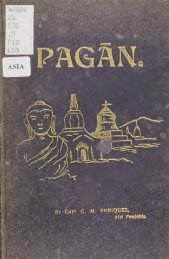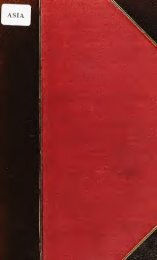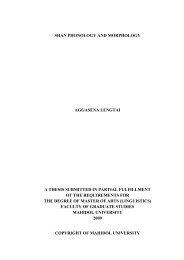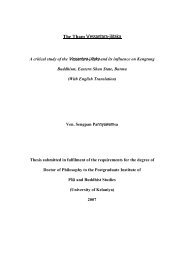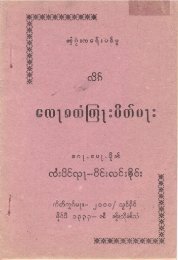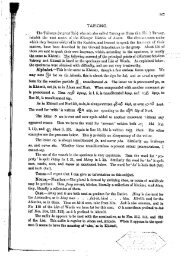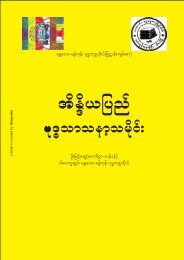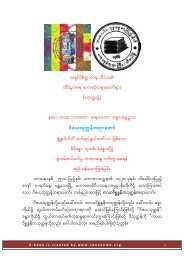The Tai Ahom National Council Memo Scheduling
The Tai Ahom National Council Memo Scheduling
The Tai Ahom National Council Memo Scheduling
You also want an ePaper? Increase the reach of your titles
YUMPU automatically turns print PDFs into web optimized ePapers that Google loves.
<strong>The</strong>re is another anomalous situation faced by the <strong>Ahom</strong> today. “On the basis of the 1945<br />
July resolution the Assam Land and Revenue Regulation 1886 was amended in 1947 (Vide Act<br />
XV of 1947) and a new chapter (Chapter X) under the caption “Protection of Backward Classes”<br />
was added to it. <strong>The</strong> new legislation firstly, authorized the State Government to specify the<br />
backward classes who need ed protection…” Under the authority given by this new law, the<br />
State government identified the following classes of persons as “Protected Classes” for the<br />
purpose of Chapter X namely, - plains tribals, hills tribals, tea garden triblas, Santhals, Scheduled<br />
Caste, and Nepali Grazers or Cultivators.” (Anthropological Survey of India, Assam, Vol. XV,<br />
Part One, 2003, p. 35). <strong>The</strong> <strong>Ahom</strong>s are not included in the list..<br />
<strong>The</strong> ever-rising immigration of Bangladeshis has further worsened the condition of the<br />
<strong>Ahom</strong>s in the area. On the other hand local tea gardens have been following a closed economy<br />
paying attention only to its ever-increasing labour problem in a manner without considering the<br />
plight of the indigenous people of the area. This has added to the economic plight of the <strong>Ahom</strong>s<br />
being without a cash supply means to them.<br />
Another very recent development in the progress is that the Deori, Mishing, Sonowal-<br />
Kachari who are Scheduled Tribes (Plains) and whose population are mainly concentrated in the<br />
seven districts of Upper Assam will have Autonomous bodies in governance of local affairs. <strong>The</strong><br />
Government of Assam has finalized this process. This is certainly a good beginning for selfgovernance.<br />
But what concerns the <strong>Ahom</strong> is that the population of these scheduled tribes are not<br />
concentrated in one area but are spread over many localities interspersed by other non-scheduled<br />
tribes such as the <strong>Ahom</strong>, Chutiya, Moran and others. This might create some problems of<br />
covering contiguous areas and ultimately leading to political uneasiness among the local<br />
population who have been living in amity and social harmony. <strong>The</strong> creation of the Bodo<br />
Territorial <strong>Council</strong> covering the Bodo-living villages is a pointer in this respect. This problem<br />
will not arise if the <strong>Ahom</strong>, Chutiya, Moran-Matak, Koch and Tea Tribes are declared as<br />
Scheduled Tribes (Plains) and Autonomous Territorial <strong>Council</strong> is granted to several Tribes<br />
jointly to share governance in proportion to population. Such territorial autonomous bodies in the<br />
forms of county, district, prefecture, region have been granted and are working in several regions<br />
in the Peoples’ Republic of China.<br />
<strong>The</strong> case of <strong>Ahom</strong> is also reasonable and justified in the context of present-day<br />
multinational economy and globalization of the world order where the existence of small




